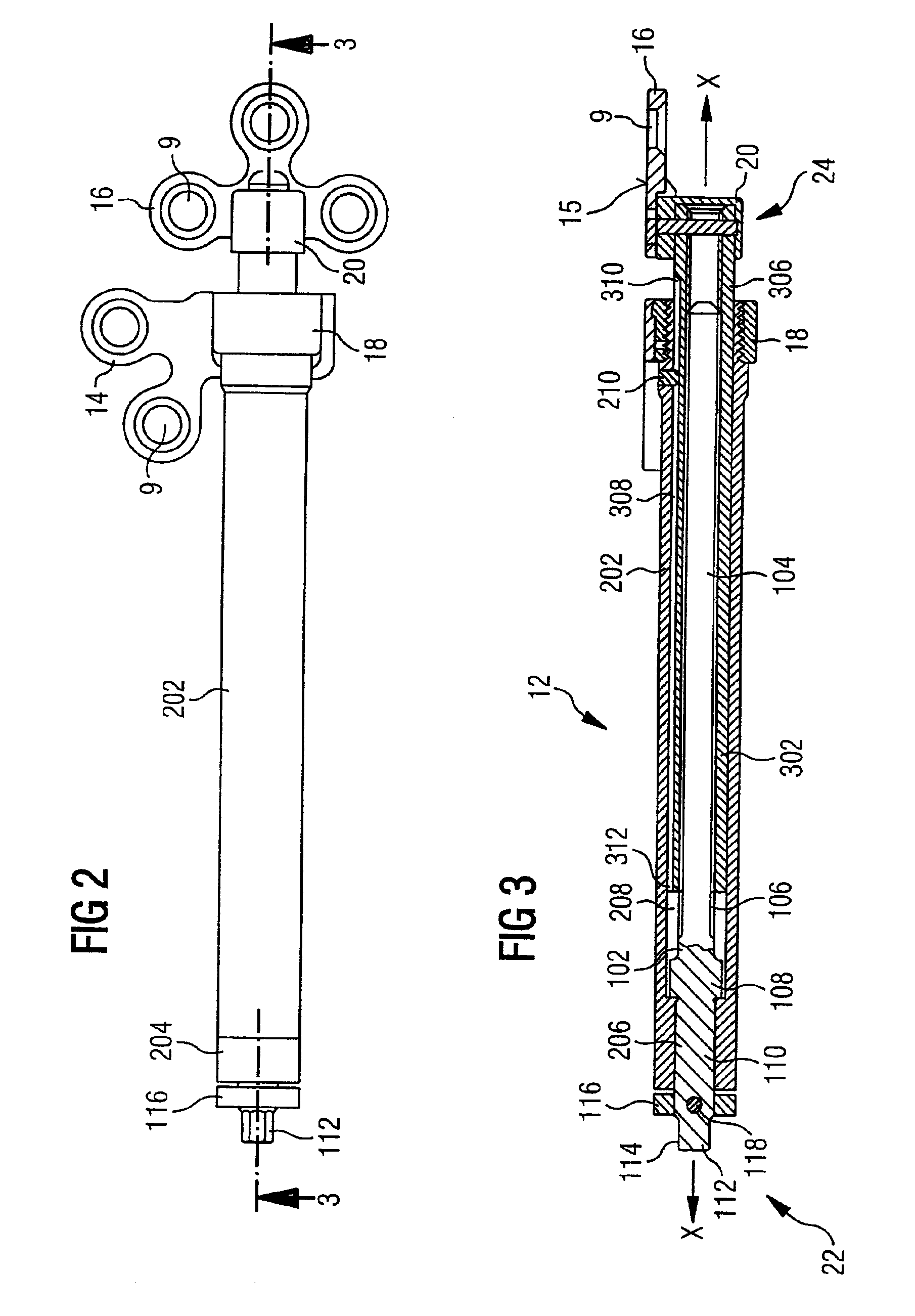Orthopedic system having detachable bone anchors
a bone anchorage and orthopedic technology, applied in the field of orthopedic system, can solve the problems of increasing the risk of infection for patients, designing the early fixator and distractors, and causing bone to have certain problems
- Summary
- Abstract
- Description
- Claims
- Application Information
AI Technical Summary
Benefits of technology
Problems solved by technology
Method used
Image
Examples
Embodiment Construction
[0032]The orthopedic device of the present invention is discussed herein with reference to a preferred embodiment adapted to be used in a linear distraction of a mandible. However, it will be clear that the invention is not limited to mandibular distraction, or indeed to distraction generally, but rather finds general application for use with any orthopedic device that involves anchoring devices to bone.
[0033]As seen in FIGS. 1-3, the orthopedic system 10 generally consists of distraction assembly 12, proximal and distal foot plates (or bone plates) 14 and 16, respectively, and proximal and distal fasteners 18 and 20, respectively. The distraction assembly 12 has a proximal, or adjustment end 22, and a distal end 24. The orthopedic system 10 is affixed to mandible 5 by bone screws 8 which are inserted through screw-holes in foot plates 14 and 16. In use, the entire orthopedic system 10 is implanted subcutaneously, except for the adjustment end 22 of the distraction assembly 12, whic...
PUM
 Login to View More
Login to View More Abstract
Description
Claims
Application Information
 Login to View More
Login to View More - R&D
- Intellectual Property
- Life Sciences
- Materials
- Tech Scout
- Unparalleled Data Quality
- Higher Quality Content
- 60% Fewer Hallucinations
Browse by: Latest US Patents, China's latest patents, Technical Efficacy Thesaurus, Application Domain, Technology Topic, Popular Technical Reports.
© 2025 PatSnap. All rights reserved.Legal|Privacy policy|Modern Slavery Act Transparency Statement|Sitemap|About US| Contact US: help@patsnap.com



